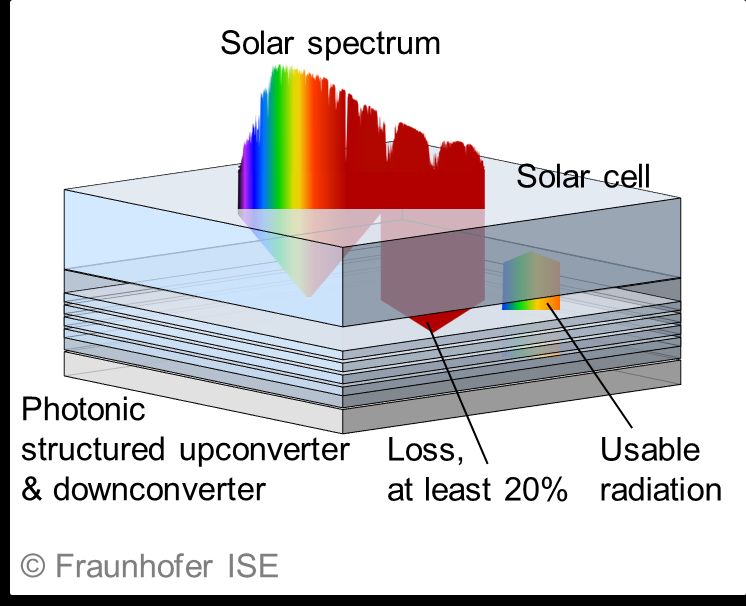| Duration: | April 2015 - March 2018 | |
| Contracting Authority/ Sponsors: | German Federal State Baden-Württemberg and Fraunhofer Gesellschaft within the scope of the Sustainability Cente | |
| Project Partner: | Albert Ludwigs University Freiburg | |
| Website: | www.leistungszentrum-nachhaltigkeit.de/pilotprojekte/naluwiles | |
| Project Focus: |
NaLuWiLeS – Nano-Structures for Luminescence Amplification to Increase the Efficiency Value of LEDs and Solar Cells

Increasing the efficiency of solar modules is an important lever for a further reduction in the electricity generation costs. A significant portion of the production costs are area-proportional costs. LED costs are area-related as well. For this reason, promising new theoretical concepts for increasing the efficiency of solar cells and LEDs are applied practically in the “NaLuWiLeS” pilot project within the scope of the Sustainability Center Freiburg. Lower costs support the further proliferation of photovoltaics and LEDS and thus, more sustainable electricity generation and use. Beyond that, an increase in efficiency also results in lower material and resource requirements, further increasing sustainability.
In silicon solar cells, approx. 20 % of the irradiated solar energy is lost as long-wave, infrared photons have not enough energy to excite charge carriers in silicon. Using up-conversion, several of these low-energy photons can be converted into a high-energy photon that can be used by the silicon solar cell. In the “NaLuWiLeS” project, a fivefold increase of the up-conversion luminescence and thus, also a five-fold increase of the efficiency increase obtained through up-conversion in a solar cell should be achieved. Down-converters for an increase in the used spectral range as well as photon structures for an increase of local irradiance and for emission amplification are investigated for this performance increase far beyond the state-of-the-art of technology. The structures should be optimized based on highly sophisticated theoretical models. Synergies are realized for the theoretical description and the characterization of components, which are beneficial for the development of highly efficient white LEDs that are investigated by project partners within the scope of the “NaLuWiLeS” project.